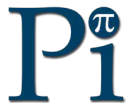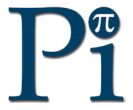Water Particle Counters from Pi - ParticleSense, CounterSense and FilterSense
The Water Particle Counter range from Pi is the first in the world to be able to mount multiple water particle counting sensors on a single controller. ParticleSense is a stand alone particle counter with the capability of counting and sizing particles in water from 2-127 microns. The CounterSense is a sophisticated online water particle counter with the capability to size and count particles from 2-127 microns and to count from 2-750 microns. The FilterSense has the capability to size and count particles from 2-127 microns. Both the CounterSense and the FilterSense are connected to a CRIUS®4.0 or a CRONOS® which can also connect other sensors including more particle counters.
The range of sensors are available with different controllers giving you the same great performance with different communication, display, and control options.
With the Pi range of controllers, you get everything that you need – and nothing that you don’t, without sacrificing the quality of measurement. Each sensor comes with a ‘clean me’ alert and can be run with a constant head weir or a flow meter, to maintain a constant flow.
- Counts and sizes water-borne particles down to 2 microns
- Optimize Cryptosporidia and Giardia removal
- Monitor filter performance
- Monitor membrane performance
- Optimize filtration
- Reports both particle counts and size distribution
- Sapphire optics for extended life
- User calibration for lower cost of ownership
The most common application for a Pi water particle counter is in water treatment and the optimization or ongoing monitoring of filter effluent.
The CounterSense can be coupled with turbidity and differential pressure sensors and offers on-board PID control of automatic backwash and can provide data logging and optional remote access via the mobile phone network such that you can have your filtration expert in your plant wherever they are in the world. The CounterSense is possibly the most advanced online particle analyzer in the world.
The FilterSense is designed for multi-point monitoring of filter banks, lowering the cost per point with up to 15 particle water particle counter sensors.
Other applications for Pi water particle counters include:
- Pre-RO monitoring
- Make up water monitoring
- Ultra-clean medical device washing monitoring
- Membrane filtration monitoring
Across the developed world failures in coagulation and filtration have led to outbreaks of Cryptosporidiosis and other illnesses caused by organisms such as Cryptosporidia and Giardia.
Continuous monitoring of the turbidity at the outlet of a filter is essential and even a legal requirement in some countries. Turbidity is a good measure of the clarity of the water and gives a single, understandable output for operators and is most sensitive to smaller particles (particles <1µm in size).
Particle Counters look at larger particles (usually larger than 2µm) and provide additional information over and above that provided by turbidity meters, particularly information regarding the break down of a filter and the passing of Crypto sized particles, often undetectable by a turbidity meter.
In the past many water companies, water authorities, local county councils, etc. have put turbidity meters on filters but not particle counters, largely due to the higher cost of water particle counters.
CounterSense
- Counts particles 2-750 microns
- Counts and sizes 2-127 microns
- Up to 6 user programmable size ranges
- Multiple sensors – reduced cost
FilterSense
- Counts particles 2-750 microns
- Counts and sizes 2-127 microns
- Up to 3 user selectable size ranges (at time of purchase)
- Multiple sensors – reduced cost
As particles in a water stream pass through a measurement cell they break a laser beam inside the particle counter. This break is measured by a detector opposite the laser beam and the number of breaks is equal to the number of particles and the size of signal (created as the particle passes through the beam) is proportional to the size of the particle. The Pi instruments are unique in the marketplace in that they allow:
- Simple user calibration
- Set up direct from the instrument (no software/PC required)
- Multiple sensor capability (can be combined with other sensors such as UV254, Turbidity, etc.)
- Control with PID functions based on particle counts
- Multipoint capability
Focus Ons are a series of short articles distributed by email providing technical information regarding instrumentation, process measurement in potable, waste, process and pool waters. If you would like to join the mailing list, please contact us.
| Document | Type | Size |
|---|---|---|
| ParticleSense | Brochure | 571kB |
| CounterSense | Brochure | 735kB |
| FilterSense | Brochure | 724kB |
| ppbSense | Brochure | 548kB |
| ParticleSense Portable | Brochure | 560kB |
| Laboratory Based and Portable Analyzers | Technical Note | 608kB |
"The Pi products provide excellent value for money and represent the best municipal drinking water analyzers available."
John Clark
Chemtrac - Atlanta
"The support from Pi and its partners is superb. They go above and beyond to ensure that, not only is their equipment perfect but that the process is working great too. Five Stars!"
Anthony Glitto
Equip Solutions - Illinois, USA
"Going from ORP control to amperometric chlorine sensor control has undoubtedly improved the pool water immensely!"
Chris Tedeschi
Link Automation - USA
"We've been using these analyzers since 2008. They're easy to use and very stable. Calibration and maintenance is quick and simple."
Lloyd Gruginski
Chehalis WTP - Chehalis, WA
"We at Scottish Water have been using the excellent Pi LabSense 3 and portable UV254 instruments in the field for optimizing our Water Treatment processes for some years now. We find them easy to use and invaluable for detecting and resolving issues in a timely, efficient and effective manner. Two great pieces of kit!”
Paul Weir
Scottish Water - UK
"I want to thank you and all at Process Instruments for all the assistance, information and handholding during the year. The help that was so freely given was very much appreciated. Can you please extend my appreciation to all at Pi and let me wish you all a happy, safe and wonderful Christmas and I look forward to working with you again in 2021."
Michael Bailey
Wexford Co. Co. - Ireland
"Excellent level of support and always so much more prompt than a lot of our suppliers."
Phill Tuxford
Detectronic - UK
"The plant can’t produce good quality water without the CoagSense."
Mick Murphy
Wexford Co. Co. - Ireland
"We started using Process Instruments 10 years ago and they worked so well that when we were looking at expanding, Process Instruments were our "go to" company."
Rebecca - Pool Manager
Woodland Spa - Burnley, UK
"We've been installing pools and spa controllers from Pi for more than 10 years and they just are the best on the market."
Dr. Lester Symmonds
Pool Sentry - UK
"We've used the CRIUS® with chlorine, pH and conductivity sensors for several years and confirm quality, performance and reliability has been wholly satisfactory to date."
David Kerr
Karis Technical Services Ltd. - UK
"We in ECM ECO Monitoring can only recommend Process Instruments products and services to all other potential clients. They have very complex portfolio of products for water quality monitoring in various types of industries, friendly attitude, very quick delivery time and prompt reaction to all our needs and inquires. Our clients especially appreciate the particle counters and sizers allowing identification of drinking water treatment problems. The Streaming Current Monitors are a great tool for optimisation of expensive chemicals.”
Branislav
ECM ECO Monitoring - Slovakia
"Simply the best turbidity available."
John Clark
Chemtrac - Atlanta, GA
"In 2019, we purchased 29 particle counters which were installed in our water plants. So far, their performance has been perfect."
Li Yongjun
Jinan Hongquan Water Company - China
"We have installed hundreds of ozone analyzers from Pi over the years. They are just accurate, reliable and require low maintenance."
Jiao Tumei
Qingdao Guolin Environmental Technology Co., Ltd., - China
"Over the last few years we've purchased chlorine and turbidity analyzers from Chemtrac and with routine calibration the probes measure the chlorine and turbidity without any issue. We are very happy with this product and would highly recommend them."
Daniel "Buck" Owen
Ocoee Utility District - Ocoee TN
“Servicing customers is much more than just solving problems or addressing complaints and Pi does that very competently with technical and quick efforts providing a good experience."
Clovis Tuchapski
Buckman - Latin America
"Pi's technical team has enabled us to be one step ahead of our competitors by adding value to our projects thanks to their fast and excellent support from the moment you first reach out.
Ibrahim Kaplin
Thermomed - Turkey
"The Streaming Current Monitor from Pi is the best SCM I have ever used. The analyser responds quickly and has many powerful functions, which helps me save a lot of money."
Ye Yancong
Xiamen Xishan Water Plant - China
“Process Instruments has a broad range of high quality and user-friendly solutions for water-industry problems. The short lead times and great customer support make Pi a reliable partner.”
Péter Szabó
SC KATALIN NOHSE CHIMIST IMPORT SRL - Romania
"Process Instruments UK always have a high level of customer service. All our interactions with Pi have exceeded our expectations. It is always a pleasure working with you.”
Iñaki Seisdedos Rodríguez
Izasa Scientific - Spain
"Process Instruments UK always have a high level of customer service. All our interactions with Pi have exceeded our expectations. It is always a pleasure working with you.”
Rudi Tuffek
Allpronix - South Africa









